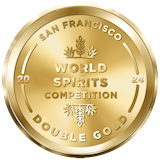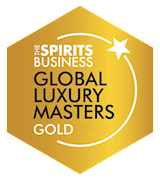Best Caribbean Liqueur Types
Coconut rum is a somewhat misleading term that mostly refers to coconut-flavored liqueurs typically based on rum. These liqueurs can have natural or artificial coconut flavors and aromas, while the base is usually made with white or gold rum.
They typically do not have high alcohol content. Coconut-flavored rums are internationally produced, but their spiritual home remains on the Caribbean islands. Their light and aromatic character is best showcased in tropical cocktails.
VARIATIONS OF Coconut Rum
Malibu is a rum-based, coconut-flavored liqueur that is produced in Barbados. It is made with light-bodied white rum that is distilled from molasses. The rum is then combined with sugar and coconut extract to achieve its light character and subtle coconut flavors and aromas.
It is bottled at 21% ABV. Malibu was invented to simplify the preparation of piña coladas. When it became popular, the entire production was moved to Barbados, and the overall quality of the liqueur was improved. Malibu is nowadays the most popular coconut-flavored rum in the world.
Angostura is a concentrated bitters made with herbs and spices. It was developed in 1824 in the Venezuelan town of Angostura (now called Ciudad Bolívar), when a German doctor Johann Gottlieb Benjamin Siegert, who was a surgeon general for Simón Bolívar, used a secret blend of botanicals, including angelica, cinchona, ginger, cinnamon, cardamom, and orange peel, to create an antifebrile tonic.
The drink was an instant success and was later mainly used as a flavor enhancement because of the fairly high alcohol content of 44.7%. Due to political turmoil, Siegert relocated his company from Angostura to Trinidad and Tobago, where it still operates.
Dubbed as the national drink of the Dominican Republic, mamajuana (Mama Juana) is a herbaceous, full-bodied, and spiced alcoholic drink made with rum. It was initially invented as a medicinal tea that was often lauded as a libido booster.
The beverage has ancient origins, and it was probably created by the native Taíno people. Original versions were was later laced with alcohol to create modern interpretations of the drink. Despite numerous variations, the base is usually made with rum, red wine, and honey, while the additions include a variety of botanicals and tree bark.
Blue Curaçao is a type of Curaçao liqueur—naturally colorless liqueur that is flavored with Laraha oranges. This variety is artificially colored to attain its distinctive, vibrant blue color. This clear drink has a typical orange flavor, though the final taste profile may vary depending on the producer.
There are several manufactures on the market, but they are not necessarily located on Curaçao, and some even do not use Laraha oranges. Blue Curaçao is mostly used as a flavoring and coloring agent in cocktails.
Curaçao is a popular liqueur flavored with Laraha (Curaçao orange), which is cultivated on the namesake island in the southern Caribbean Sea. The story of its invention started in the 16th century when the Spanish colonizers brought Valencian oranges to Curaçao.
The fruit did not adapt well to the local climate, and it was almost inedible. It took decades for the locals to realize that the dried peel is rich with essential oils and incredibly aromatic. The peel was then used in the production of liqueurs, and though it is not certain, many believe that the commercial production was started in 1896 by the Senior family.
VARIATIONS OF Curaçao
Tia Maria is a Jamaican coffee liqueur that was first introduced in the 1940s. The base is made with Jamaican rum, and the flavorings include Jamaican coffee and vanilla beans from Madagascar. The drink is smooth, fragrant, and full-bodied while the usual notes include aromas of vanilla and coffee.
Although Dr. Kenneth Leigh Evans was the first to commercialize Tia Maria, it is believed that he based his recipe on an ancient Jamaican coffee liqueur which dates back to the mid-17th century. According to a legend, the recipe was owned by a young heiress who fled Jamaica to escape the war.
Falernum is a sweet liqueur that also comes in the form of an alcoholic or non-alcoholic syrup. The base of the liqueur is always made with rum, sugar, and lime, and the usual additions include ginger, cloves, almonds, cinnamon, and nutmeg.
It is believed that the combination first appeared in the 19th century, while the first written mention dates back to the 1920s. Its origin is mostly associated with Barbados, but varieties are found across the Caribbean. Thus, the recipes also vary, as well as consistency and flavor.
Angostura Orange Bitters is a bitter made with a secret blend of oils from bitter and sweet oranges, herbs, and spices. It was released in 2007, and it was the first new label by Angostura in almost 200 years. The aromatic profile is dominated by orange flavor and aroma, accompanied by herbal and spicy notes.
It is usually used as a cocktail ingredient that best pairs with gin, vodka, rum, or whiskey, but it also works well as an ingredient in sauces or desserts. Angostura's story started in the Venezuelan city of Angostura (Ciudad Bolivar), but the production was later moved to Trinidad and Tobago, where it still operates.
Orange Curaçao belongs to the group of Curaçao liqueurs, which originate from the namesake island. The original version of Curaçao was flavored with Laraha oranges, and in its basic form, the drink is clear and colorless.
Additional colorings, in this case orange, were mostly added for decorative purposes, but the producers often add other ingredients to the mix, which creates a variety of flavor profiles. There are no specific regulations for the production of Curaçao liqueurs, and they are produced in several countries around the world.
Best Caribbean Liqueur Producers
AWARDS

World Liqueur Awards - Country Winner
2024
BEST Wooden Walls Distilling Liqueurs
AWARDS

SFWSC - San Francisco World Spirits Competition - Double Gold
2024, 2023

The Luxury Masters - Gold
2023, 2022

The Rum & Cachaça Masters - Gold
2023, 2022
BEST Bacardi Spirits
Best Caribbean Liqueurs
AWARDS

World Liqueur Awards - Country Winner
2024
AWARDS

ISC-International Spirits Challenge - Gold
2014
TasteAtlas food rankings are based on the ratings of the TasteAtlas audience, with a series of mechanisms that recognize real users and that ignore bot, nationalist or local patriotic ratings, and give additional value to the ratings of users that the system recognizes as knowledgeable. TasteAtlas Rankings should not be seen as the final global conclusion about food. Their purpose is to promote excellent local foods, instill pride in traditional dishes, and arouse curiosity about dishes you haven’t tried.





